The Postpartum Hemorrhage Devices market is expected to register a CAGR of 3.5% from 2025 to 2031, with a market size expanding from US$ XX million in 2024 to US$ XX Million by 2031.
The report is segmented by Product Type (Non-Pneumatic Anti-Shock Garment, Prefilled Injection System, Uterine Tamponade Devices). The report further presents analysis based on the End Users (Hospitals, Clinics, and Other End Users). The global analysis is further broken-down at regional level and major countries. The Report Offers the Value in USD for the above analysis and segments.
Purpose of the Report
The report Postpartum Hemorrhage Devices market by The Insight Partners aims to describe the present landscape and future growth, top driving factors, challenges, and opportunities. This will provide insights to various business stakeholders, such as:
- Technology Providers/Manufacturers: To understand the evolving market dynamics and know the potential growth opportunities, enabling them to make informed strategic decisions.
- Investors: To conduct a comprehensive trend analysis regarding the market growth rate, market financial projections, and opportunities that exist across the value chain.
- Regulatory bodies: To regulate policies and police activities in the market with the aim of minimizing abuse, preserving investor trust and confidence, and upholding the integrity and stability of the market.
Postpartum Hemorrhage Devices market Segmentation
Product Type
- Non-Pneumatic Anti-Shock Garment
- Prefilled Injection System
- Uterine Tamponade Devices
End Users
- Hospitals
- Clinics
- Other End Users
Customize This Report To Suit Your Requirement
You will get customization on any report - free of charge - including parts of this report, or country-level analysis, Excel Data pack, as well as avail great offers and discounts for start-ups & universities
Postpartum Hemorrhage Devices market Size and Forecasts (2021 - 2031), Global and Regional Share, Trends, and Growth Opportunity Analysis Report Coverage : by Product Type (Non-Pneumatic Anti-Shock Garment, Prefilled Injection System, Uterine Tamponade Devices); End Users (Hospitals, Clinics, Other End Users); and Geography (North America, Europe, Asia Pacific, and South and Central America)Market: Strategic Insights
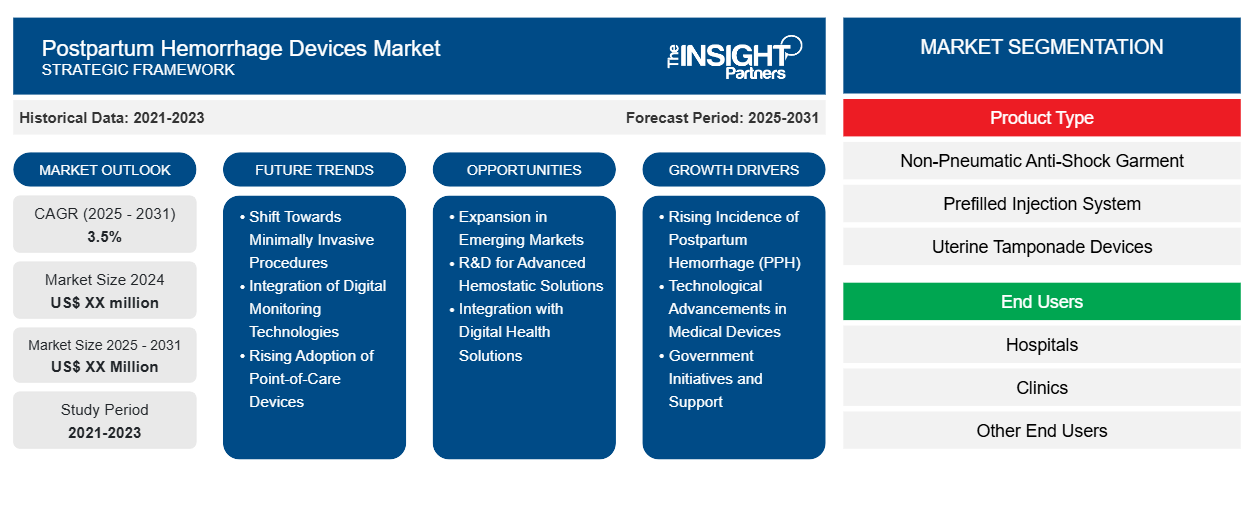
- Get Top Key Market Trends of this report.This FREE sample will include data analysis, ranging from market trends to estimates and forecasts.
Postpartum Hemorrhage Devices market Growth Drivers
- Rising Incidence of Postpartum Hemorrhage (PPH): The increasing number of postpartum hemorrhage (PPH) cases, due to factors such as high-risk pregnancies and complicated deliveries, is driving demand for effective devices. Postpartum hemorrhage remains one of the leading causes of maternal mortality worldwide, prompting hospitals and healthcare providers to adopt advanced hemorrhage control devices to reduce risks and enhance patient safety.
- Technological Advancements in Medical Devices: Innovations in hemostatic devices, such as uterine balloon tamponade, surgical instruments, and automated devices, are improving the effectiveness of postpartum hemorrhage management. The development of minimally invasive solutions, including devices for early detection and rapid intervention, is contributing to better outcomes in PPH treatment, thus driving market growth.
- Government Initiatives and Support: Government programs and initiatives to improve maternal healthcare and reduce postpartum complications are increasing. Efforts to improve delivery care in low-resource settings and global maternal health programs are expanding the use of postpartum hemorrhage devices, particularly in emerging markets. Financial support, including subsidies and funding for maternal health technologies, further accelerates adoption.
Postpartum Hemorrhage Devices market Future Trends
- Shift Towards Minimally Invasive Procedures: The market is shifting towards minimally invasive solutions, including devices that allow for faster and less invasive intervention during postpartum hemorrhage. Innovations such as intrauterine balloon tamponade and surgical hemostasis devices are improving outcomes while reducing the need for complex surgeries or hysterectomy, resulting in shorter recovery times and better overall patient care.
- Integration of Digital Monitoring Technologies: The integration of digital technologies and smart sensors in postpartum hemorrhage devices is becoming more prevalent. These devices now include features like real-time monitoring of blood loss and automated alerts, allowing healthcare providers to act quickly. Digital platforms enhance data tracking and patient management, ultimately improving clinical decision-making during delivery and postpartum care.
- Rising Adoption of Point-of-Care Devices: There is an increasing trend in the adoption of point-of-care devices, which provide quick, on-site treatment for postpartum hemorrhage. These devices, including portable ultrasound machines and hemostatic agents, are designed to be used immediately after delivery, especially in emergency or low-resource settings, enabling healthcare professionals to manage PPH without waiting for specialized equipment.
Postpartum Hemorrhage Devices market Opportunities
- Expansion in Emerging Markets: As healthcare infrastructure improves in emerging economies, there is a significant opportunity for the adoption of postpartum hemorrhage devices in countries across Asia-Pacific, Latin America, and Africa. Rising maternal mortality rates and the increasing focus on improving maternal health in these regions present a growing demand for advanced hemorrhage control devices.
- R&D for Advanced Hemostatic Solutions: There is a growing opportunity for innovation in advanced hemostatic devices, including biodegradable materials, tamponade devices, and biological agents. Companies investing in R&D to create more effective and user-friendly devices can capture market share by addressing the specific needs of healthcare providers in managing severe postpartum bleeding.
- Integration with Digital Health Solutions: As the adoption of digital health solutions in healthcare increases, manufacturers of postpartum hemorrhage devices can tap into the growing market by developing devices that integrate with electronic medical records (EMRs) and other digital platforms. This integration allows for improved data management, remote monitoring, and better decision-making in emergency situations, enhancing clinical efficiency and patient outcomes.
Postpartum Hemorrhage Devices market Size and Forecasts (2021 - 2031), Global and Regional Share, Trends, and Growth Opportunity Analysis Report Coverage : by Product Type (Non-Pneumatic Anti-Shock Garment, Prefilled Injection System, Uterine Tamponade Devices); End Users (Hospitals, Clinics, Other End Users); and Geography (North America, Europe, Asia Pacific, and South and Central America)Market Regional Insights
The regional trends and factors influencing the Postpartum Hemorrhage Devices market Size and Forecasts (2021 - 2031), Global and Regional Share, Trends, and Growth Opportunity Analysis Report Coverage : by Product Type (Non-Pneumatic Anti-Shock Garment, Prefilled Injection System, Uterine Tamponade Devices); End Users (Hospitals, Clinics, Other End Users); and Geography (North America, Europe, Asia Pacific, and South and Central America)Market throughout the forecast period have been thoroughly explained by the analysts at Insight Partners. This section also discusses Postpartum Hemorrhage Devices market Size and Forecasts (2021 - 2031), Global and Regional Share, Trends, and Growth Opportunity Analysis Report Coverage : by Product Type (Non-Pneumatic Anti-Shock Garment, Prefilled Injection System, Uterine Tamponade Devices); End Users (Hospitals, Clinics, Other End Users); and Geography (North America, Europe, Asia Pacific, and South and Central America)Market segments and geography across North America, Europe, Asia Pacific, Middle East and Africa, and South and Central America.
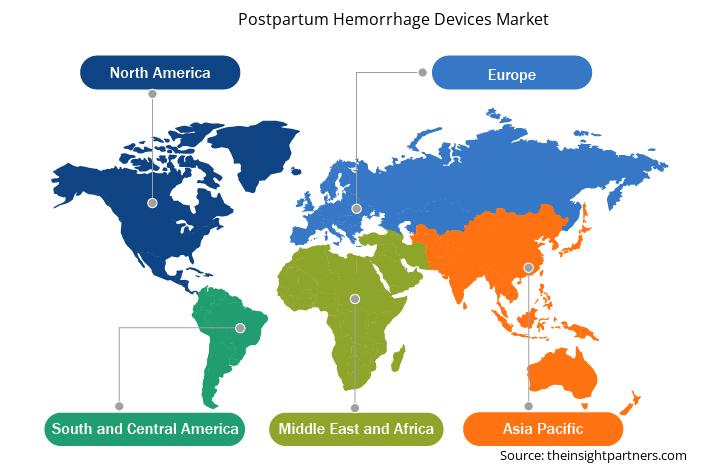
- Get the Regional Specific Data for Postpartum Hemorrhage Devices market Size and Forecasts (2021 - 2031), Global and Regional Share, Trends, and Growth Opportunity Analysis Report Coverage : by Product Type (Non-Pneumatic Anti-Shock Garment, Prefilled Injection System, Uterine Tamponade Devices); End Users (Hospitals, Clinics, Other End Users); and Geography (North America, Europe, Asia Pacific, and South and Central America)Market
Postpartum Hemorrhage Devices market Size and Forecasts (2021 - 2031), Global and Regional Share, Trends, and Growth Opportunity Analysis Report Coverage : by Product Type (Non-Pneumatic Anti-Shock Garment, Prefilled Injection System, Uterine Tamponade Devices); End Users (Hospitals, Clinics, Other End Users); and Geography (North America, Europe, Asia Pacific, and South and Central America)Market Report Scope
| Report Attribute | Details |
|---|---|
| Market size in 2024 | US$ XX million |
| Market Size by 2031 | US$ XX Million |
| Global CAGR (2025 - 2031) | 3.5% |
| Historical Data | 2021-2023 |
| Forecast period | 2025-2031 |
| Segments Covered |
By Product Type
|
| Regions and Countries Covered | North America
|
| Market leaders and key company profiles |
Postpartum Hemorrhage Devices market Size and Forecasts (2021 - 2031), Global and Regional Share, Trends, and Growth Opportunity Analysis Report Coverage : by Product Type (Non-Pneumatic Anti-Shock Garment, Prefilled Injection System, Uterine Tamponade Devices); End Users (Hospitals, Clinics, Other End Users); and Geography (North America, Europe, Asia Pacific, and South and Central America)Market Players Density: Understanding Its Impact on Business Dynamics
The Postpartum Hemorrhage Devices market Size and Forecasts (2021 - 2031), Global and Regional Share, Trends, and Growth Opportunity Analysis Report Coverage : by Product Type (Non-Pneumatic Anti-Shock Garment, Prefilled Injection System, Uterine Tamponade Devices); End Users (Hospitals, Clinics, Other End Users); and Geography (North America, Europe, Asia Pacific, and South and Central America)Market market is growing rapidly, driven by increasing end-user demand due to factors such as evolving consumer preferences, technological advancements, and greater awareness of the product's benefits. As demand rises, businesses are expanding their offerings, innovating to meet consumer needs, and capitalizing on emerging trends, which further fuels market growth.
Market players density refers to the distribution of firms or companies operating within a particular market or industry. It indicates how many competitors (market players) are present in a given market space relative to its size or total market value.
Major Companies operating in the Postpartum Hemorrhage Devices market Size and Forecasts (2021 - 2031), Global and Regional Share, Trends, and Growth Opportunity Analysis Report Coverage : by Product Type (Non-Pneumatic Anti-Shock Garment, Prefilled Injection System, Uterine Tamponade Devices); End Users (Hospitals, Clinics, Other End Users); and Geography (North America, Europe, Asia Pacific, and South and Central America)Market are:
- C.R. Bard
- Smith & Nephew
- Baxter International
- Teleflex Incorporated
- Cook Medical
- Olympus Corporation
Disclaimer: The companies listed above are not ranked in any particular order.
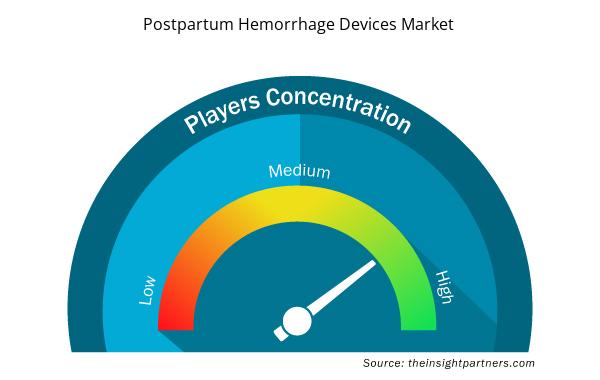
- Get the Postpartum Hemorrhage Devices market Size and Forecasts (2021 - 2031), Global and Regional Share, Trends, and Growth Opportunity Analysis Report Coverage : by Product Type (Non-Pneumatic Anti-Shock Garment, Prefilled Injection System, Uterine Tamponade Devices); End Users (Hospitals, Clinics, Other End Users); and Geography (North America, Europe, Asia Pacific, and South and Central America)Market top key players overview
Key Selling Points
- Comprehensive Coverage: The report comprehensively covers the analysis of products, services, types, and end users of the Postpartum Hemorrhage Devices market, providing a holistic landscape.
- Expert Analysis: The report is compiled based on the in-depth understanding of industry experts and analysts.
- Up-to-date Information: The report assures business relevance due to its coverage of recent information and data trends.
- Customization Options: This report can be customized to cater to specific client requirements and suit the business strategies aptly.
The research report on the Postpartum Hemorrhage Devices market can, therefore, help spearhead the trail of decoding and understanding the industry scenario and growth prospects. Although there can be a few valid concerns, the overall benefits of this report tend to outweigh the disadvantages.
- Historical Analysis (2 Years), Base Year, Forecast (7 Years) with CAGR
- PEST and SWOT Analysis
- Market Size Value / Volume - Global, Regional, Country
- Industry and Competitive Landscape
- Excel Dataset
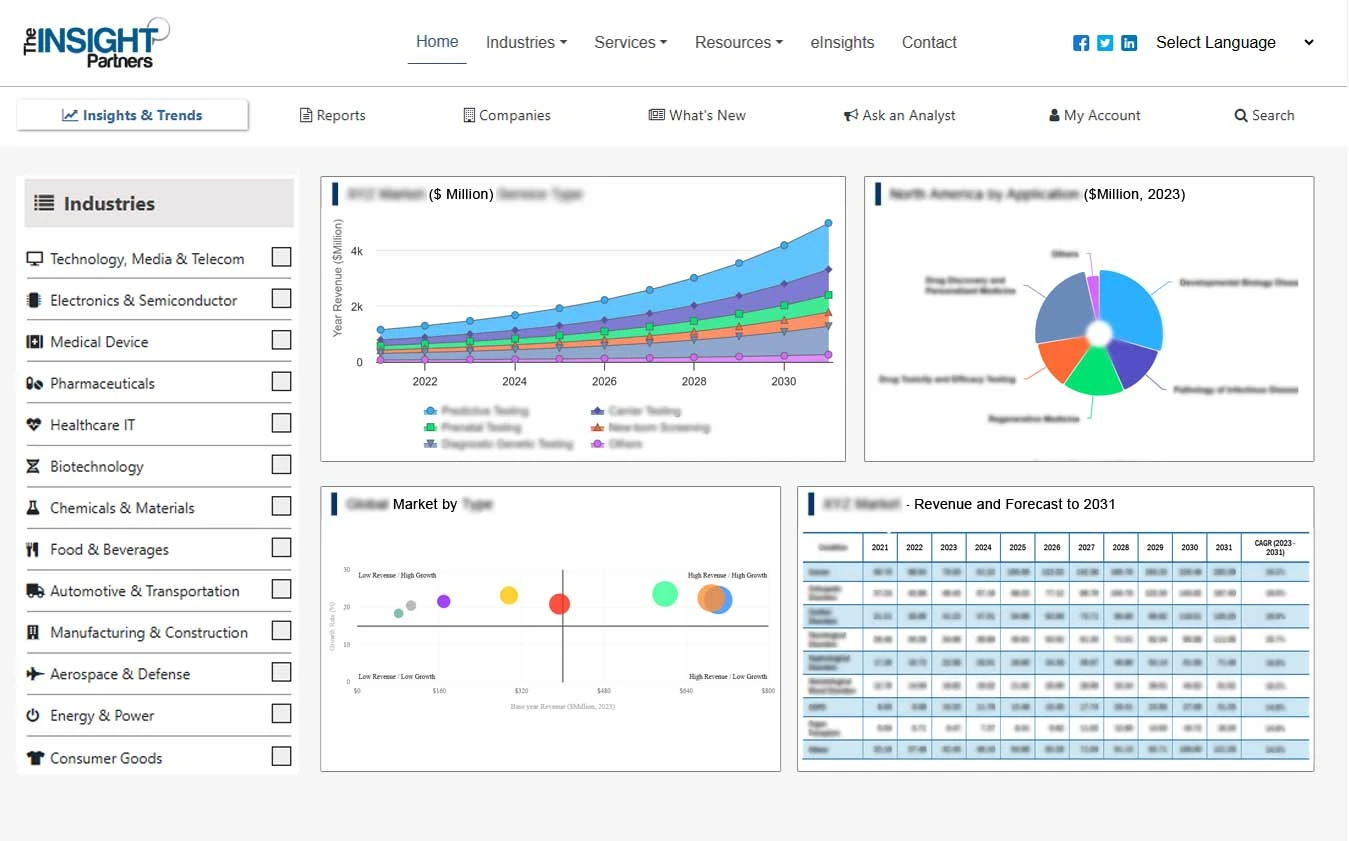
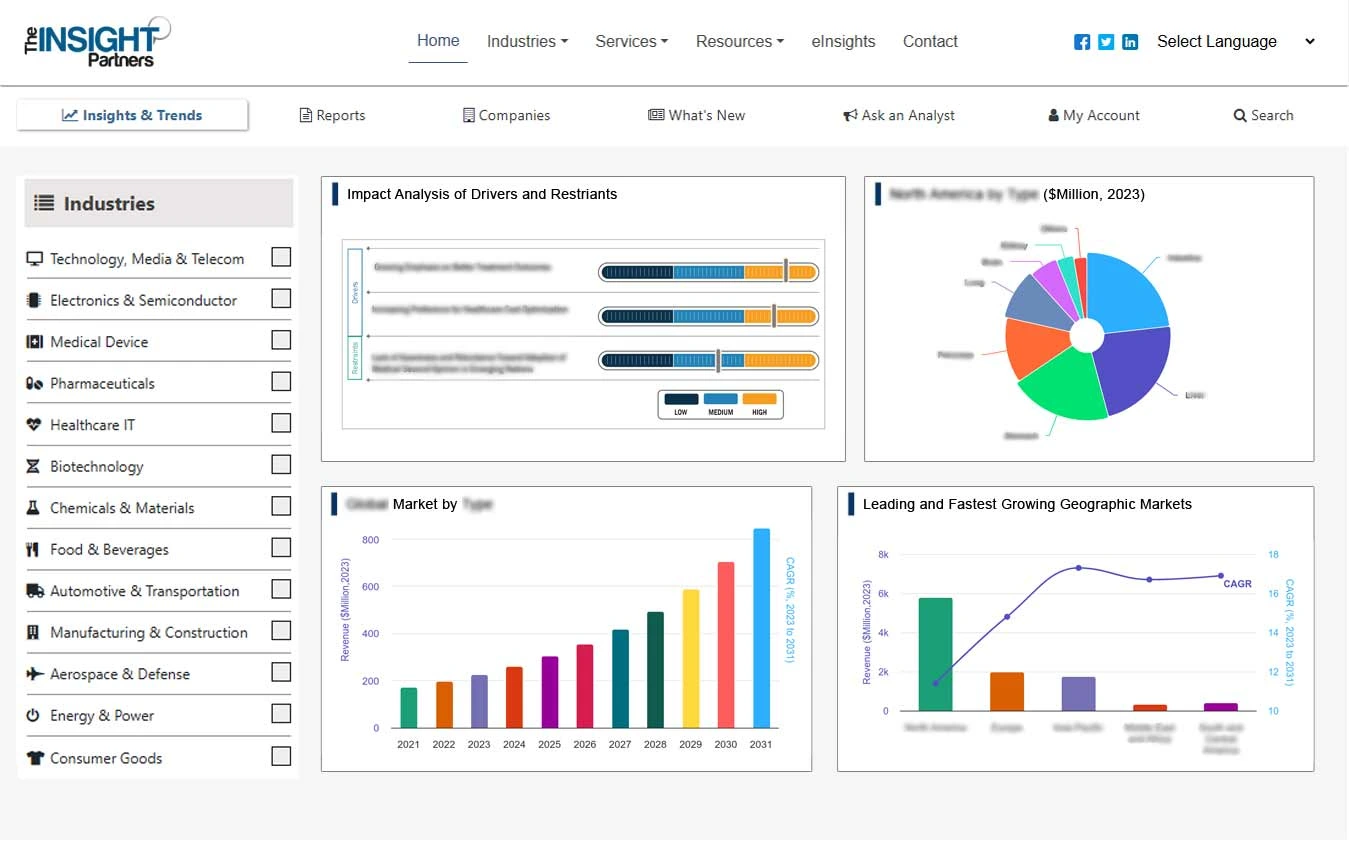
- Postpartum Hemorrhage Devices market Size and Forecasts (2021 - 2031), Global and Regional Share, Trends, and Growth Opportunity Analysis Report Coverage : by Product Type (Non-Pneumatic Anti-Shock Garment, Prefilled Injection System, Uterine Tamponade Devices); End Users (Hospitals, Clinics, Other End Users); and Geography (North America, Europe, Asia Pacific, and South and Central America) Market Scope and Analysis
- Postpartum Hemorrhage Devices market Size and Forecasts (2021 - 2031), Global and Regional Share, Trends, and Growth Opportunity Analysis Report Coverage : by Product Type (Non-Pneumatic Anti-Shock Garment, Prefilled Injection System, Uterine Tamponade Devices); End Users (Hospitals, Clinics, Other End Users); and Geography (North America, Europe, Asia Pacific, and South and Central America) Market Size and Share
- Advanced Planning and Scheduling Software Market
- Analog-to-Digital Converter Market
- Hummus Market
- Volumetric Video Market
- Occupational Health Market
- Aesthetic Medical Devices Market
- Trade Promotion Management Software Market
- Ceiling Fans Market
- Rare Neurological Disease Treatment Market
- Intraoperative Neuromonitoring Market

Report Coverage
Revenue forecast, Company Analysis, Industry landscape, Growth factors, and Trends

Segment Covered
This text is related
to segments covered.

Regional Scope
North America, Europe, Asia Pacific, Middle East & Africa, South & Central America

Country Scope
This text is related
to country scope.
Frequently Asked Questions
Postpartum hemorrhage devices are designed to control excessive bleeding following childbirth. They help in the management of PPH, which can occur due to uterine atony, trauma, or retained placental fragments. These devices, such as uterine balloon tamponades and hemostatic agents, are crucial in stabilizing the mother and preventing complications like shock or death.
The increasing adoption is driven by factors such as a higher incidence of high-risk pregnancies, technological advancements in hemostatic devices, and increasing awareness of maternal health issues globally. Additionally, the rising demand for minimally invasive treatments, point-of-care solutions, and better maternal mortality rates contribute to the widespread adoption of postpartum hemorrhage devices.
Technological innovations, such as automated hemorrhage control systems, smart sensors, and real-time monitoring devices, are significantly improving the management of postpartum hemorrhage. These advancements enhance the speed and accuracy of intervention, reduce the risks of complications, and improve patient outcomes, driving demand for advanced devices in healthcare facilities
Government support is crucial in expanding access to maternal health technologies. Initiatives like funding for low-resource settings, global health programs, and maternal health education drive the adoption of postpartum hemorrhage devices. These efforts are helping to reduce maternal mortality rates, particularly in developing regions, and ensure access to life-saving technologies for managing PPH.
The shift toward minimally invasive procedures is leading to increased demand for non-surgical solutions to manage postpartum hemorrhage. Devices such as intrauterine balloon tamponades and non-invasive hemostatic agents are becoming preferred options as they offer quicker recovery times, fewer complications, and lower risks compared to more invasive surgical methods, making them more desirable in clinical settings.
Emerging markets, particularly in Asia-Pacific and Africa, represent significant growth opportunities for postpartum hemorrhage device manufacturers. With improving healthcare infrastructure and a rising focus on maternal health, these regions offer demand for affordable and accessible PPH solutions. Manufacturers can capitalize on this trend by offering cost-effective, portable, and easy-to-use devices suitable for diverse healthcare settings.
Trends and growth analysis reports related to Life Sciences : READ MORE..
- C.R. Bard
- Smith & Nephew
- Baxter International
- Teleflex Incorporated
- Cook Medical
- Olympus Corporation
- Medtronic
- Fisher & Paykel Healthcare
- Stryker Corporation
- Hologic, Inc.
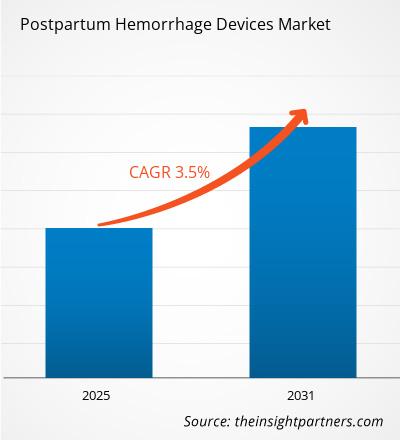
 Get Free Sample For
Get Free Sample For